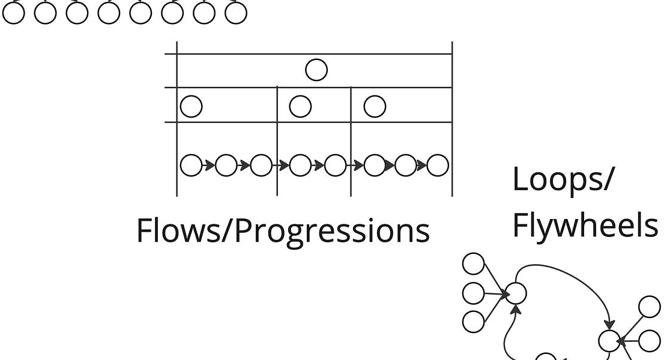The Beautiful Mess
8M
323

Image Credit: The Beautiful Mess
TBM 310: Trees, Journeys, and Loops (and the Functional Model Trap)
- In cross-functional product development, model types frequently manifest as capability trees, customer journeys, and growth loops.
- Capability trees, as the name suggests, describe the functional capacity or potential of a system, team, or organization to carry out a particular action or process.
- Customer journey maps describe change and progression from a customer's perspective.
- A flywheel hypothesis for a product, sometimes called a growth loop, helps to establish a clear sense of the core loop that would retain customers, enable them to do more effective work and ultimately indicate sustainable, differentiated success for both the company and its customers.
- Capabilility trees are useful for establishing a shared language that can endure over time but are less effective for describing the present moment.
- The journey grounds us in the customer experience as they traverse the current iteration and solution for our capabilities, helping us plan improvements.
- Each model shows relationships between things. Capability trees show how higher-level capabilities depend on lower-level capabilities. Journeys show how one step leads to another. Flywheels show how variables feed into each other.
- The functional model trap occurs when you lose sight of the holistic forest through the trees, and run into trouble when thinking about these things in isolation.
- These models and their potential variations can complement each other to establish a more resilient shared language across product, design, and engineering.
- Teams are encouraged to use as many helpful models as needed but make sure the models use ubiquitous language and link to each other to avoid the functional trap.
Read Full Article
14 Likes
For uninterrupted reading, download the app